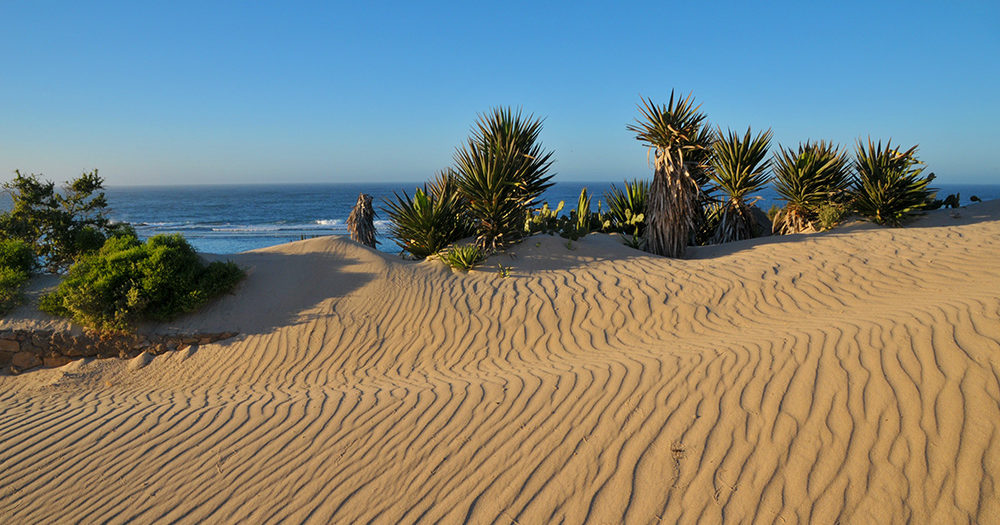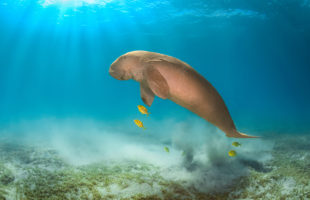Before the arrival of humans, Madagascar was home to animal giants that went extinct by and by with the existence of humans on the island: A giant lemur has lived in Madagascar, besides him a gigantic eagle, an oversized Fossa and of course, one of the largest birds that have ever existed on Earth. Actually, there was not only one kind of elephant bird in Madagascar, but at least seven different species. They looked similar to ostriches of today but massively larger and stronger:
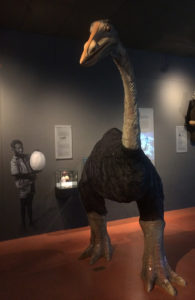
The largest known elephant bird, Aepyornis maximus, weighed in between 250 and 440 kg. And with up to three meters height, he was a real giant. Somewhat smaller, but not less stout was Aepyornis medius, Aepyornis hildebrandti with up to 65 kg and 1,5 m height and Aepyornis gracilis. Besides them, there were the smaller and less heavy elephant birds: Mullerornis agilis with a height of only 1,50 m, Mullerornis betsilei and Mullerornis rudis. Since species identification has mainly focussed on the size of the animals, it may have happened that some of the allegedly smaller species are in fact just the female counterpart of one of the larger “species”.
Probably, elephant birds live during the Late Pleistocene in the transition towards Holocene (which is lasting until today), approximately 43.000 years ago. Following genetic research, elephant birds are related to the recent kiwi from New Zealand and the emus from Africa. You can see this relationship easily: Like kiwis and wmus, elephant birds lost their ability to fly but gained long legs ready to run long distances. Their beak was long and stout, so they could forage for tubers or break hard shells. Scientists today assume that elephant birds were forest dwellers similar to the cassowaries of Australia, that spend much time of the day foraging and that are omnivorous. Since 2018, however, it has been doubted whether elephant birds were active during the day. The poorly developed visual range in the brain could indicate that the giant birds were nocturnal. Originally, elephant birds occurred all over the island. Their preferred and last habitats were in southwest Madagascar in the area around Morondava. Here a lot of fossils are found still today.
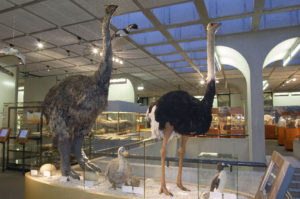
Examinations of bones revealed that elephant birds grow rather slowly. Accordingly, they were probably reproducing slowly, too. Scientists do not estimate their clutches to be more than two eggs. But these few eggs could reach a perimeter of up to one meter and content of seven liters. Archaeologists have found even completely preserved exemplars in Madagascar. Still today, vast amounts of broken eggshells lie nearby Faux Cap in the utmost south of the island – whole beaches there consist of eggshell residues. Clever Madagascans assemble them into whole eggs again and sell them to travelers – but you are not allowed to carry these curiosities with you home.
Human lores about Malagasy elephant birds are almost as old as humanity in Madagascar is. Already in the 9th century, Arabic seafarers narrated of the mystical bird Rokh in the tales of “A thousand and one nights”, a giant eagle larger than an elephant. The famous seafarer Sindbab met the huge bird on an island in the Indian Ocean and got entangled in adventures. Maybe the Malagasy elephant birds originally were the alive models for this creature. Of course, the tale was richly embellished. In the 13th century, the legend of bird Rokh still circulated. In a travelogue in 1298, Marco Polo reported people on Madagascar having told him about an animal named “Rukh” which should look like an eagle and would feed on elephants.
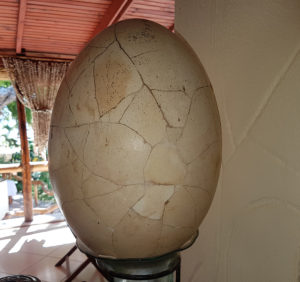
This is the point where tales of the Orient mix up with the narrations of real giant birds because there never were elephants in Madagascar. So how could a giant bird eat these grey mammals there? However, it is exciting that Polo was right with the locality “south Madagascar”. So it might be that Madagascans indeed told him of a mythical big bird.
Sadly, the elephant birds did not survive the arrival of humans for a long time. People ate their eggs which is proven by scratch marks on eggshells. For sure, people also hunted the birds for food and ate their meat. Additionally, poultry the people brought with them to the island might have introduced some bird diseases the elephant birds could not cope with because they had been isolated for centuries. Earlier, in the transmission from Pleistocene to Holocene, a climate change had already changed the habitat of the elephant bird to much drier areas and thus resulted in a decreasing population. Consequently, when humans arrived in Madagascar, there already was a smaller population of elephant birds that were more prone to go extinct. Last but not least, extensive slash-and-burn agriculture set the final seal on the end of the elephant birds.
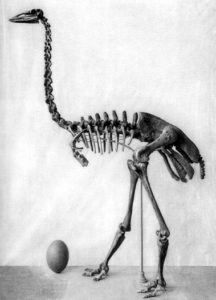
The last sighting of live elephant birds possibly derives from the year 1658. French man Étienne de Flacourt claimed that there were so-called Vorompatra (Malagasy for “bird of Ampatra”, that is the name of the present region Androy) in south Madagascar, a giant bird similar to ostriches. But it was unclear if he had ever seen one alive because he only said the birds lived very withdrawn. In contrast, most scientists today assume that elephant birds went extinct already 1300 after Christ.
Today, most bones of elephant birds found in Madagascar are located in the Museum of Natural History in Paris. But other museums worldwide have eggs, reconstructed skeletons or single bones, too. In fact, research in these interesting animals lies idle, and there remain a lot of secrets to be lifted around elephant birds.
 MADAMAGAZINE Your Magazine about Madagascar
MADAMAGAZINE Your Magazine about Madagascar
